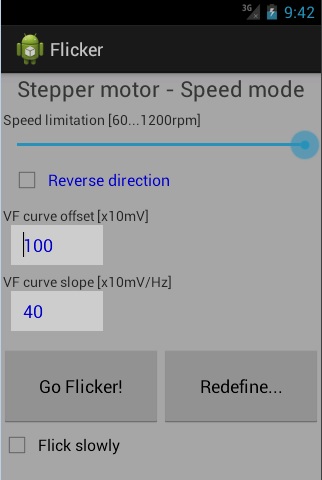danijel.gorupec
Newbie level 4

This one is almost trivial...
To parametrize/configure simple DIY boards powered by small 8-bit microcontrollers, one might use DIP switches or jumpers... Last few weeks I am experimenting with another solution - to define parameters on a smartphone GUI and then transfer them into the tiny 8-bit microcontroller using the "Flicker" interface. The "Flicker" interface is optical in nature and data is transferred by smartphone screen flickering.
At minimum, it takes:
- one phototransistor
- one input pin on your microcontroller
- about 250 bytes of programming memory
- the Flicker application for your smatphone
I wrote a simple Filcker application for android phones (you can define your own GUI and transfer data to your microcontroller). If you are interested, you can find more info **broken link removed**. There is also a page with a small **broken link removed** where the "Flicker" interface is used in practice.
Let me know if you have any suggestion or question.

To parametrize/configure simple DIY boards powered by small 8-bit microcontrollers, one might use DIP switches or jumpers... Last few weeks I am experimenting with another solution - to define parameters on a smartphone GUI and then transfer them into the tiny 8-bit microcontroller using the "Flicker" interface. The "Flicker" interface is optical in nature and data is transferred by smartphone screen flickering.
At minimum, it takes:
- one phototransistor
- one input pin on your microcontroller
- about 250 bytes of programming memory
- the Flicker application for your smatphone
I wrote a simple Filcker application for android phones (you can define your own GUI and transfer data to your microcontroller). If you are interested, you can find more info **broken link removed**. There is also a page with a small **broken link removed** where the "Flicker" interface is used in practice.
Let me know if you have any suggestion or question.
